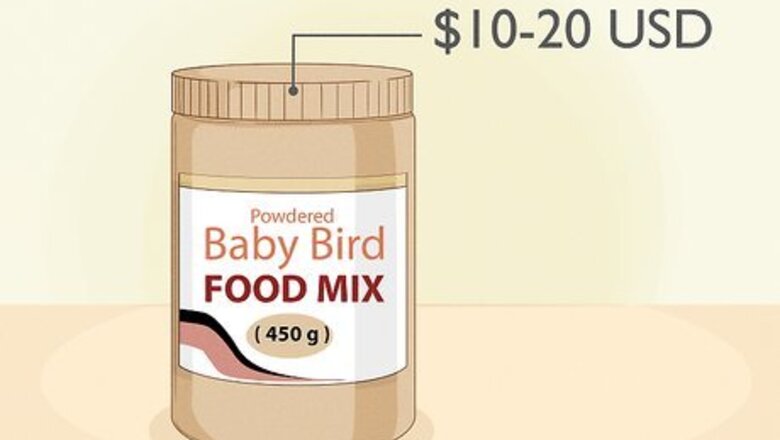
views
X
Research source
Making Baby Budgie Food
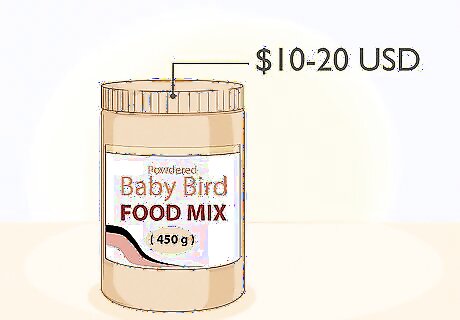
Buy powdered baby bird food mix at a reputable pet supply store. Some baby budgie caregivers mix up their own “budgie porridge” blends, but it’s a much better idea to purchase a high-quality baby bird food blend instead. That way, you know the bird will get the nutrients it needs and that the food will be the right consistency—so long as you follow the package directions closely. Ask your vet for baby bird food recommendations. They may prefer a particular brand or mix for budgies. Expect to pay around $10-20 USD for a 450 g (0.99 lb) canister or package of powdered baby bird food mix.

Mix the powdered food with boiling water that has cooled slightly. A 2-week old baby budgie should get around 4 ml (0.14 fl oz) of mixed food per feeding, which isn’t much! To make such a small amount, follow the dosing instructions on the food mix package. Spoon the directed amount of powder into a small bowl. Meanwhile, bring around 240 ml (8.1 fl oz) of water to a boil, then let it cool for 2-3 minutes. Measure, add, and thoroughly stir in some of the water, again according to the dosing instructions. Don’t mix a large batch and save some of it for later. You have to mix up a fresh batch for each feeding. The mixed food will be roughly the consistency of porridge. It’s meant to replicate the texture of regurgitated food from the budgie’s mother. A 3-week old budgie should get 5 ml (0.17 fl oz) per feeding, a 4-week old should get 6 ml (0.20 fl oz), and so on until weaning is completed.
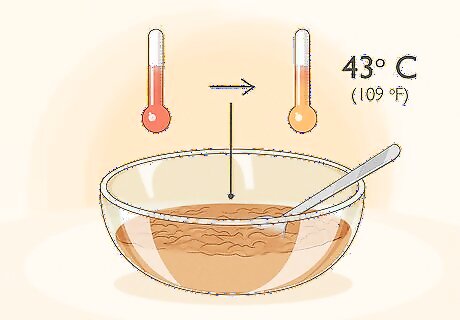
Wait until the food mixture drops to 43 °C (109 °F) before using it. Use a thermometer to check the temperature every minute or so. Be patient, and don’t feed the mixture to the baby before it falls to 43 °C (109 °F). However, once it does reach this temperature, feed it to the baby right away. If you feed a baby budgie food that’s either above 43 °C (109 °F) or below 41 °C (106 °F), serious health problems may result, possibly leading to death.
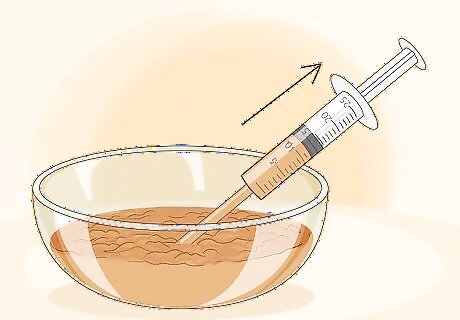
Load a sterilized feeding syringe-spoon combo with the mixed food. For the best results, buy a baby bird feeding syringe with an attachable metal feeding spoon tip that works as a chute to direct the food into the budgie’s tiny beak. Sterilize your chosen feeding tool before each use by washing it with soap and water, rinsing it, boiling it for 5 minutes, and letting it air dry until cool. Draw the food up into the syringe by pulling the plunger, then attach the feeding spoon. A feeding syringe with a wide mouth but without an attachable feeding spoon will also work, but it’s a bit trickier to get the food into the baby’s beak. Buy several feeding syringes and spoons! That way you can sanitize several at a time and have them ready to go. Alternatively, buy a steam sterilizer designed for baby bottles to sterilize several feeding syringes and spoons at a time.
Feeding the Baby
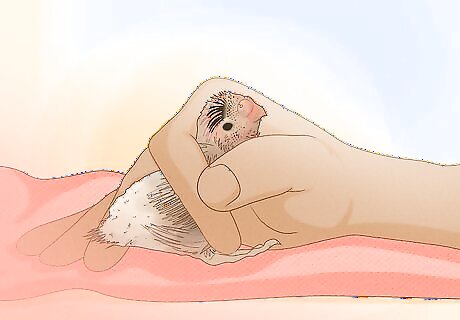
Cup your hand gently around the bird and rest it on a warm towel. Warm a towel to body temperature, such as by sitting on it for a few minutes, then lay it on your lap or on a tabletop. Gently cup your hand around the baby budgie’s body, loosely encircling the base of its neck with your thumb and forefinger. Lift and place the bird on the towel, maintaining a gentle hold throughout the entire feeding process. Baby budgies can get a bit squirmy once they’re a few weeks old, but they’re typically easy to handle with a loose, gentle grip. Don’t squeeze them!
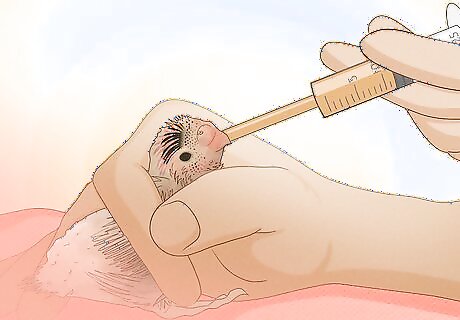
Touch the tip of the feeding tool to one side of the baby’s beak. Instead of aiming the tip of the feeding spoon right at the front of the baby’s beak, approach from the side and slightly from above—hold the syringe at about a 45-degree downward angle. Tap the tip of the spoon ever so gently against the side of the beak. This is exactly what the mother bird does with its beak to get the baby to open wide, and it will work for you, too! If the baby budgie won’t open its beak after a few gentle taps, try the other side. If it still won’t open up, try again in another 30-60 minutes. If the bird still won’t open up to eat, contact your vet.
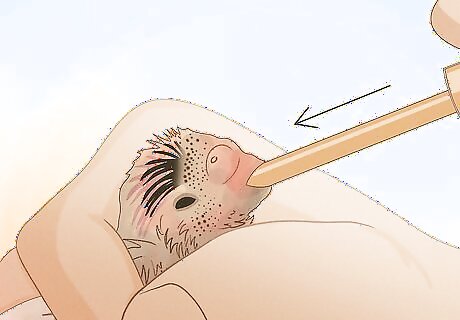
Dispense the food slowly once the baby’s beak opens. Very slowly and very steadily press on the plunger to deliver the food into the budgie’s open beak. Aim to dispense about ¼ of the total amount of food in 15-20 seconds, then pull the feeding tool away for a second. Gently tap the baby’s beak and resume feeding if it opens up again. Repeat the process every 15-20 seconds. Don’t dispense too much food at once. You could end up choking the baby bird.
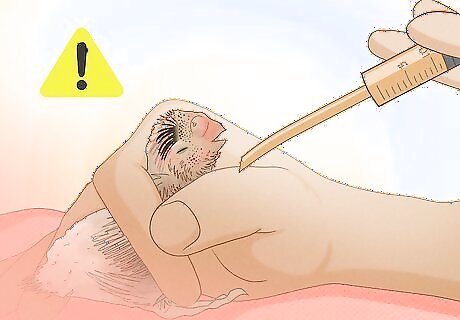
Stop when the bird stops, the food runs out, or the baby’s “crop” is full. Generally speaking, a baby budgie at 2 weeks old will eat about 2-4 ml per feeding; at 3 weeks old, 4-5 ml; and at 4 weeks old until weaning, about 5-7 ml. These are only estimates, though, and there are 3 main ways to know when to end each feeding: The baby stops eating and won’t open its beak. So long as it’s eaten close to the bottom estimate of the expected amount based on its age, this isn’t a problem. The baby eats the entire amount. Consider adding a bit more food next time, but don’t go beyond the upper estimate for the baby budgie’s age range unless your vet advises it. The baby’s “crop,” the food storage pouch at the underside of its beak, feels full. When full, the crop should appear slightly bulged out and feel firm but not rigid when you touch it with your fingertip.
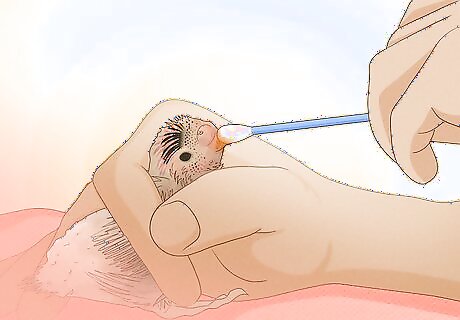
Wipe the bird’s beak area very gently with a clean, damp cloth. Like most babies, budgies are messy eaters! To prevent uneaten food from caking on and around the baby’s beak, very gently dab and wipe the area with a clean, soft cloth moistened with water that’s roughly at body temperature. Don’t rub, scrub, or pick at food particles.
Sticking to a Schedule
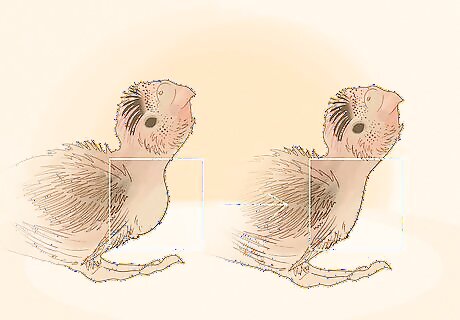
Check how long it takes for the baby’s “crop” to empty after a feeding. After a feeding, gently touch your finger to the underside of the baby’s beak—the crop should feel puffed out and fairly solid. Check the crop again every 30-60 minutes after a feeding. Once the crop is barely protruding and feels soft—but not completely empty—it’s time for another feeding. You don’t have to check the crop after every feeding. Just check it once every 1-2 days to see if it’s still emptying on roughly the same schedule.
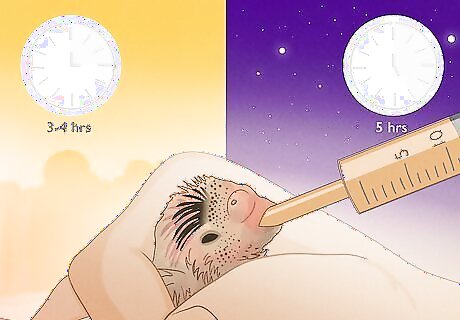
Do feedings every 2-6 daylight hours, based on the crop emptying pattern. In general, a 2-3 week-old will eat every 3-4 hours during the day, extending to every 5 hours at 4 weeks and older. That said, each baby budgie is unique, so each bird’s feeding schedule should be personalized based on its crop emptying time. The only exception is overnight—all baby budgies should have a 6-8 hour stretch every night during which they aren’t offered food. In other words, if one baby’s crop empties in about 2 hours, feed it every 2 hours. If another baby’s crop takes 4 hours to empty, feed it every 4 hours. It’s very important for the crop to empty completely each night. Otherwise, the baby budgie may develop a serious or even fatal illness.
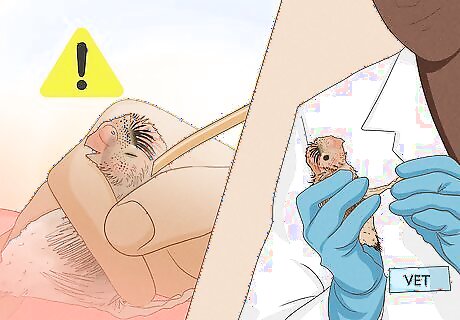
Contact your vet right away if the baby stops eating or has other food issues. Healthy baby budgies usually eat consistently and eagerly, so a refusal to eat is a sign of potential trouble you shouldn’t ignore. If the baby bird refuses to eat for more than about 6 hours—except during its nightly crop-emptying break—give your vet a call. Baby budgies sometimes develop a condition called “sour crop,” which happens when food gets lodged in the crop, goes rancid, and causes infection. While this condition is usually fatal, it’s also usually avoidable—so long as you provide food that’s the correct temperature and not too cold.
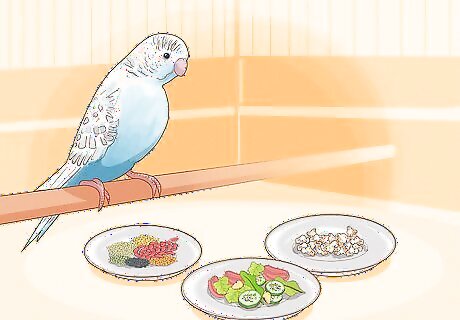
Use “abundance weaning” at around 7-8 weeks to transition to self-feeding. While “forced weaning” involves stopping all hand feedings and only providing adult food, “abundance weaning” combines hand and adult feedings until the bird naturally weans itself. At about 7-8 weeks of age, start providing adult food to the budgie, but also keep up with the syringe feedings. Over the span of a few days, the bird will eat less and less from the syringe because it’s eating more of the adult food. You’ve successfully weaned the budgie once it refuses the syringe altogether. For the adult food, offer primarily budgie food pellets, along with smaller amounts of options like seeds, soaked grains, and chopped fruits, vegetables, and hard-boiled eggs. Use a feeder that provides constant food access. Continue to feed an adult budgie this way once weaning is complete. Stay away from seeds or food with artificial colors.














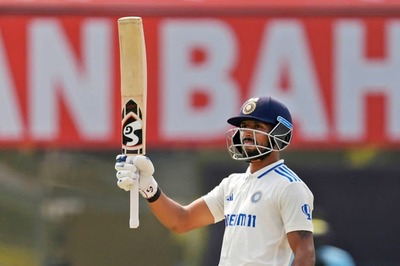





Comments
0 comment